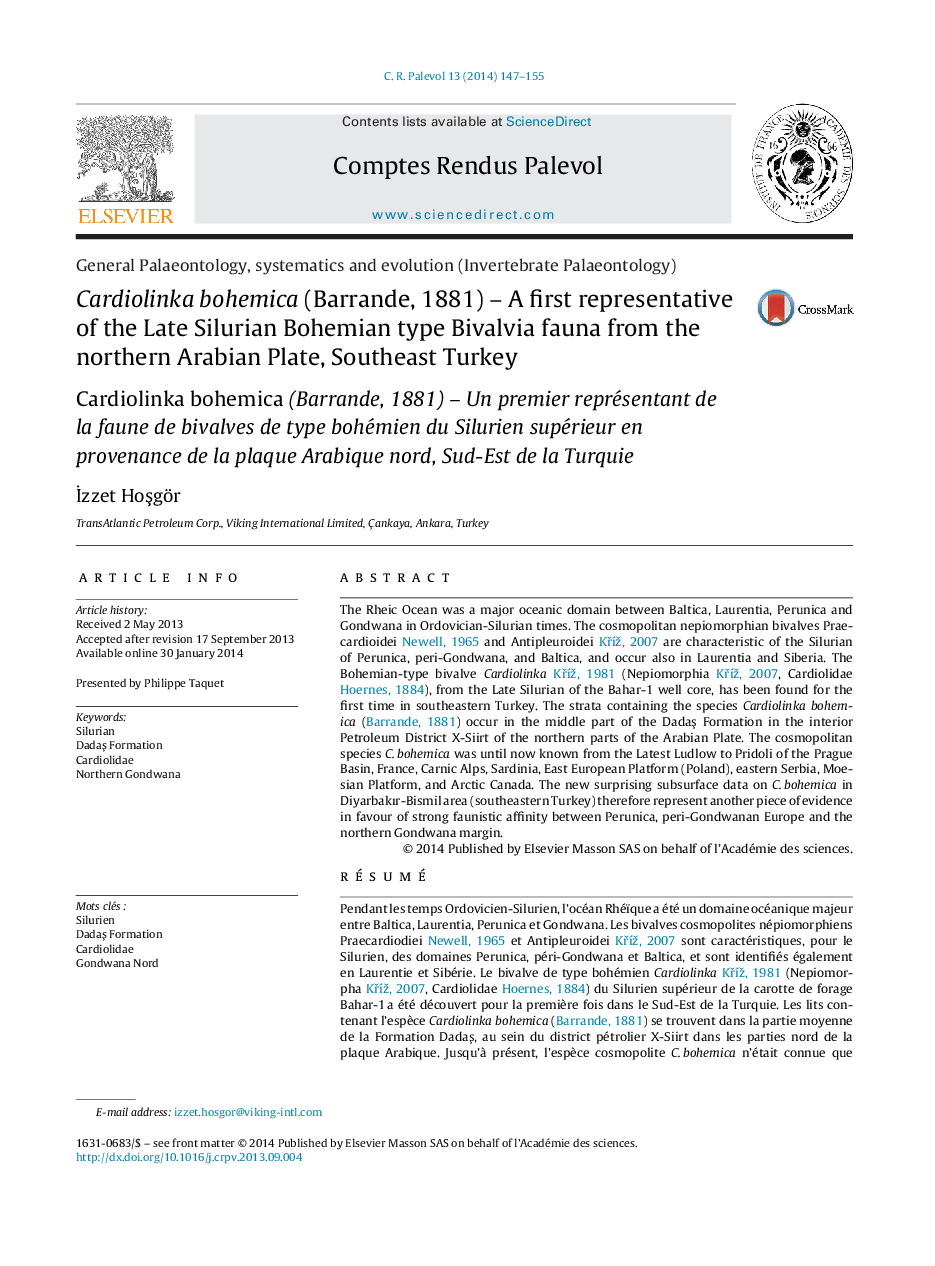| Article ID | Journal | Published Year | Pages | File Type |
|---|---|---|---|---|
| 4745744 | Comptes Rendus Palevol | 2014 | 9 Pages |
The Rheic Ocean was a major oceanic domain between Baltica, Laurentia, Perunica and Gondwana in Ordovician-Silurian times. The cosmopolitan nepiomorphian bivalves Praecardioidei Newell, 1965 and Antipleuroidei Kříž, 2007 are characteristic of the Silurian of Perunica, peri-Gondwana, and Baltica, and occur also in Laurentia and Siberia. The Bohemian-type bivalve Cardiolinka Kříž, 1981 (Nepiomorphia Kříž, 2007, Cardiolidae Hoernes, 1884), from the Late Silurian of the Bahar-1 well core, has been found for the first time in southeastern Turkey. The strata containing the species Cardiolinka bohemica ( Barrande, 1881) occur in the middle part of the Dadaş Formation in the interior Petroleum District X-Siirt of the northern parts of the Arabian Plate. The cosmopolitan species C. bohemica was until now known from the Latest Ludlow to Pridoli of the Prague Basin, France, Carnic Alps, Sardinia, East European Platform (Poland), eastern Serbia, Moesian Platform, and Arctic Canada. The new surprising subsurface data on C. bohemica in Diyarbakır-Bismil area (southeastern Turkey) therefore represent another piece of evidence in favour of strong faunistic affinity between Perunica, peri-Gondwanan Europe and the northern Gondwana margin.
RésuméPendant les temps Ordovicien-Silurien, l’océan Rhéïque a été un domaine océanique majeur entre Baltica, Laurentia, Perunica et Gondwana. Les bivalves cosmopolites népiomorphiens Praecardiodiei Newell, 1965 et Antipleuroidei Kříž, 2007 sont caractéristiques, pour le Silurien, des domaines Perunica, péri-Gondwana et Baltica, et sont identifiés également en Laurentie et Sibérie. Le bivalve de type bohémien Cardiolinka Kříž, 1981 (Nepiomorpha Kříž, 2007, Cardiolidae Hoernes, 1884) du Silurien supérieur de la carotte de forage Bahar-1 a été découvert pour la première fois dans le Sud-Est de la Turquie. Les lits contenant l’espèce Cardiolinka bohemica ( Barrande, 1881) se trouvent dans la partie moyenne de la Formation Dadaş, au sein du district pétrolier X-Siirt dans les parties nord de la plaque Arabique. Jusqu’à présent, l’espèce cosmopolite C. bohemica n’était connue que dans la période fini-Ludlow–Pridoli du bassin de Prague, en France, dans les Alpes carniennes, en Sardaigne, dans la plate-forme est-européenne (Pologne), en Serbie orientale, dans la plate-forme Moesienne, dans la partie arctique du Canada. C’est pourquoi les résultats étonnants de subsurface, obtenus sur C. bohemica dans la région de Diyarbakir-Bismil (Sud-Est de la Turquie) représenteraient une nouvelle preuve en faveur d’une forte affinité faunistique entre les domaines Perunica, Europe péri-gondwanienne et la marge nord du Gondwana.
